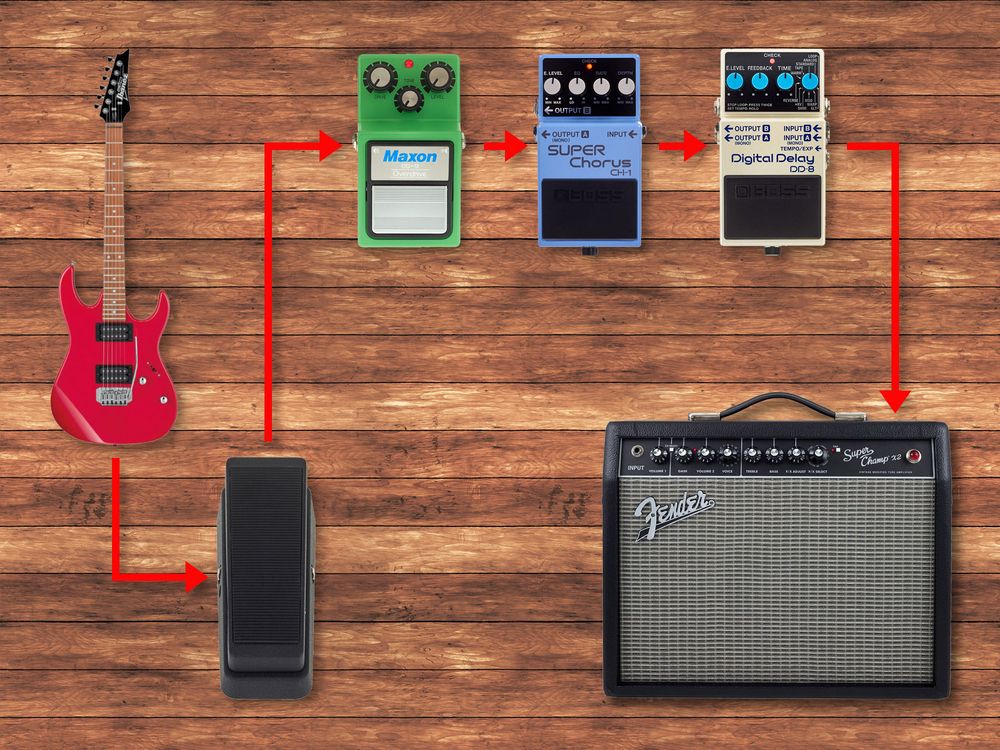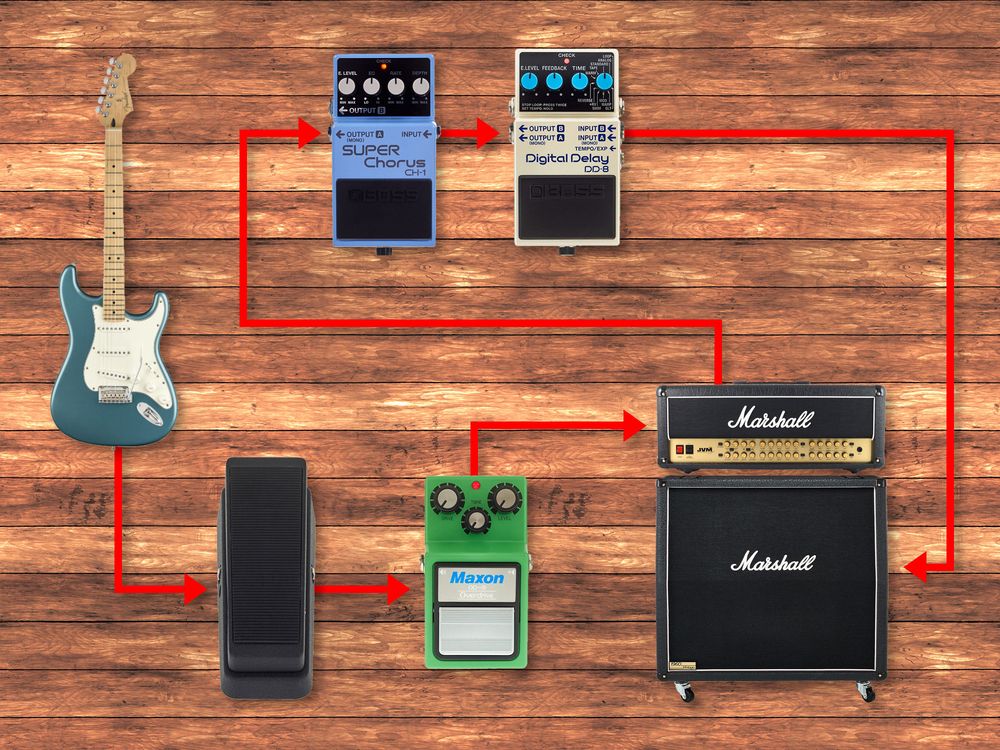9. Effect Placing
One of the most frequently asked questions. Generally, here's the basic rule: volume-altering effects before sound-altering ones before time-based effects. The only exception is the Wah-Wah pedal: Some guitarists place the Wah after their distortion pedal (Jimi Hendrix, for example, used both methods whenever he fancied), but most place it before the distortion; if you're distorting just with the amp, this naturally falls into place because the Wah doesn't belong in the amp's effects loop.
Amps without an effects loop (FX-Loop):

Guitar -> Wah-Wah -> Overdrive/Distortion -> Chorus/Flanger -> Digital Delay -> Amp
Placing a reverb upfront generally makes sense only if the amp stays really clean and the distortion comes solely from the pedal. Most amps without a loop already have spring reverb anyway.
Amp with an effects loop (FX-Loop):

Guitar -> Wah-Wah -> Overdrive/Distortion -> AMP-Input -> FX-send -> Chorus/Flanger -> Digital Delay/Digital Reverb -> FX-return (-> Power amp -> Speaker)
Special cases:
- Volume Pedal: Often used in place of the guitar's volume control (helps create excellent volume swells/violin-like sounds without dislocating your little finger); in this case, it goes at the beginning of the effects chain.
- Octaver: Sounds gritty and fantastic when placed before distortion; farther back, especially with a lower octave, it becomes cleaner, almost like a bass, which can be an interesting effect.
- Harmonizer/Pitch Shifter: Tricky when used before distortion, the tone gets pretty dirty. With modern "Intelligent Pitch Shifters" that can add a second (or even third) voice (key needs to be defined beforehand!), cheaper models might struggle with a distorted input signal, occasionally leading to odd results. Still, the sound quality in the loop is significantly better.
- Phaser/Leslie Simulation/Tremolo/Vibrato/Vibe, etc.: These effects generally sound good when connected before the amp; even subsequent distortion usually doesn't harm them. But they're also fine in the loop and produce fewer background noises there. So, it's really about experimenting to see what works best.




